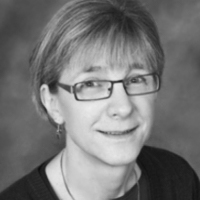Question
I am a speech-language pathologist in the public school setting in Los Angeles, CA. I am working with a nine and a half year old student with Angelman Syndrome. He has no speech, has not been seen by me to initiate any but possibly fleeting communication,
Answer
I appreciate and recognize the difficulties in this situation and commend the SLP for not giving up and reaching out for assistance. It seems to be that there may be more to this situation than the implementation of a communication program. I am wondering why the child has been absent from school for more than "half the year." It is possible that there are additional factors that need to be considered. I would recommend a team meeting with the parents along with the behavioral specialist, SLP, members of the IEP team, etc. to sit down and develop a plan together. Maybe the family needs additional supports that we are not aware of at this time.
In regard to a communication program, it may be useful to find out what are some motivating activities, experiences, tokens, etc. that could be used with the child to help motivate or interest him in communicating. Try parallel play in an area he has interest and work from there. Does he like to draw, build with blocks, put together puzzles, play on a keyboard, playing outside, etc? Speak to his teachers, family, anyone who may know him and find out as much as you can about his interests. I would start with that and work with developing a response to that event/item (concepts such as more, eat, drink, etc.).
I would simplify the communication activity to one item. Is there any baseline data from his assessment that identifies his ability to respond to objects, photos, or pictures, etc? If he can respond to photos, possibly use a photo with a picture of the child doing an activity he loves, or eating his favorite snack. Does he have a pet, or a sibling or best buddy? See if you can get a response from these pictures. If not try tangible objects that can correspond to the motivating target: cassette tape for music, cup for drink, piece of toy, etc.
If he does not respond to objects or pictures, see if you can get him to point, gesture, and possible attempt a manual sign. Will he tolerate/accept hand/hand prompting?
Lastly, I would try to develop a team approach, including teachers and support staff to carryover whatever methodologies you are trying to implement. Possibly if you can find a successful opportunity in school, it can then be carried into the home. Do you know if this child received EI services in home? Was there a plan developed with his family? If so, maybe there is useful information to work from.
A useful resource: www.angelman.org/angel/index.php?id=93
Bonnie Lisbona, M.A., CCC-SLP, has 25 years experience as a speech language pathologist, with emphasis on serving individuals with developmental disabilities. She is the owner of a company which services habilitative supports to adults with developmental disabilities.

